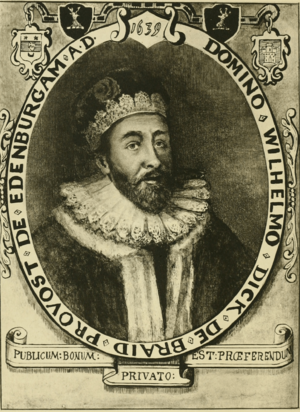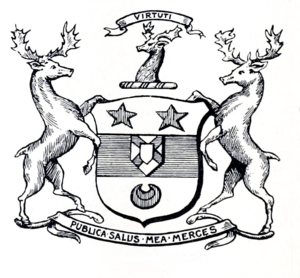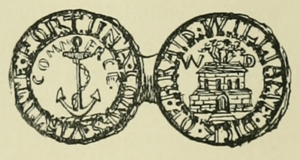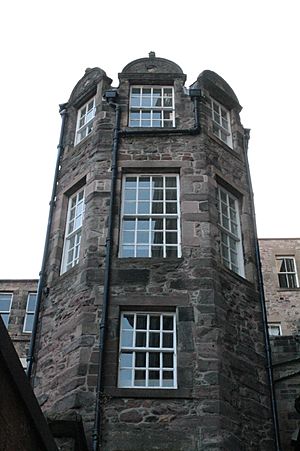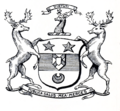William Dick of Braid facts for kids
Sir William Dick of Braid (1580–1655) was a very rich Scottish businessman and banker in the 1600s. He was so wealthy that people called him "the richest man in Scotland" around 1650. He also served as the Lord Provost of Edinburgh (like a mayor) from 1638 to 1640. Sadly, his fortune did not last, and he died without money just a few years later.
Contents
Who Was Sir William Dick?
William Dick was born in 1580 at Braid Castle, which was just outside Edinburgh at the time. His father, John Dick, was also a successful merchant who owned a lot of land in Orkney and traded with Denmark. William inherited some of this wealth, earning a large income from farms in Orkney.
A Powerful Banker
Sir William Dick became a very important banker. In 1617, he lent a huge amount of money to the Scottish government for King James VI and I's visit to Scotland. This shows how incredibly rich and powerful he was. Later, in 1639, he lent an even bigger sum to the Covenanter Army, which was a Scottish army fighting for religious freedom. This loan was worth about £24 million in today's money!
His Home and Business
Sir William Dick had a large house in Edinburgh on the Royal Mile, a famous street in the city. He built this house around 1630, and parts of it are still standing today. It's now known as Adam Bothwell's House. His offices, where he ran his banking business, were also in this building. He even had a special built-in safe hidden in the walls! He also owned a big warehouse nearby, close to St Giles Cathedral.
A Leader in Edinburgh
In 1638, William Dick became the Lord Provost of Edinburgh. This was a very important job, similar to being the mayor of the city today. He was in charge of Edinburgh for two years. In 1641, King Charles I of England made him a knight, which meant he was given the title "Sir." This was partly because Sir William had lent the King a lot of money too. He also continued to support the Covenanter Army, even paying for 10,000 soldiers to go to Ulster.
Losing His Fortune
During the English Civil War, Sir William Dick supported the King. This caused him big problems when Oliver Cromwell's army took control. Cromwell's soldiers demanded a huge amount of money from Sir William because of his support for the King. He was forced to pay a massive sum, which was most of his wealth. He went to London to try and get his money back, but instead, he was fined even more by Cromwell's government.
Sir William Dick died on December 19, 1655. Even though he had been the richest man in Scotland, he died in private lodgings in Westminster in London with no money left. People even had to collect money to pay for his funeral, and his grave has no headstone and is now lost.
After he died, his Edinburgh properties were sold. His house on the Royal Mile is now a protected historic building. All that is left of his old home, Braid Castle, are some old walls and a doocot (a pigeon house) among the trees.
Sir William Dick is even mentioned in a famous novel by Sir Walter Scott called The Heart of Midlothian.
His Family
Sir William Dick married Elizabeth Morrison. They had several children, including:
- John Dick of Braid (1610-1642)
- Alexander Dick of Heugh (1618-1663), whose family later became known as the Dick-Cunyngham baronets.
- Andrew Dick of Craig House
- William Dick, 1st Baron of Grange
- Lewis Dick
- Elizabeth Dick
- Janet Dick
- Katherine Dick, who married William Nisbet of Dean.
Images for kids


